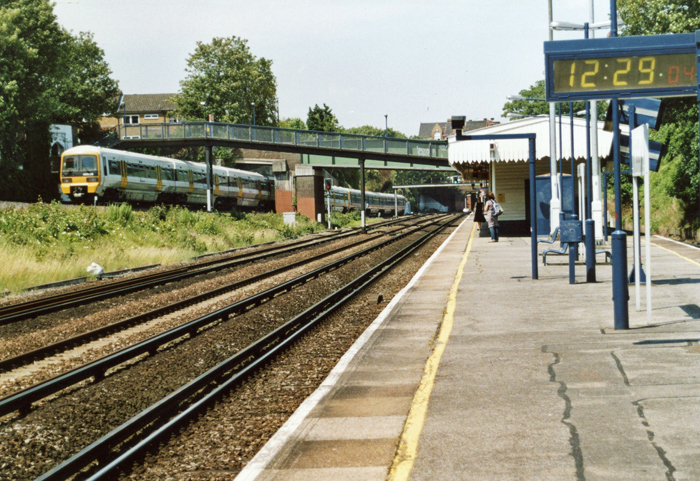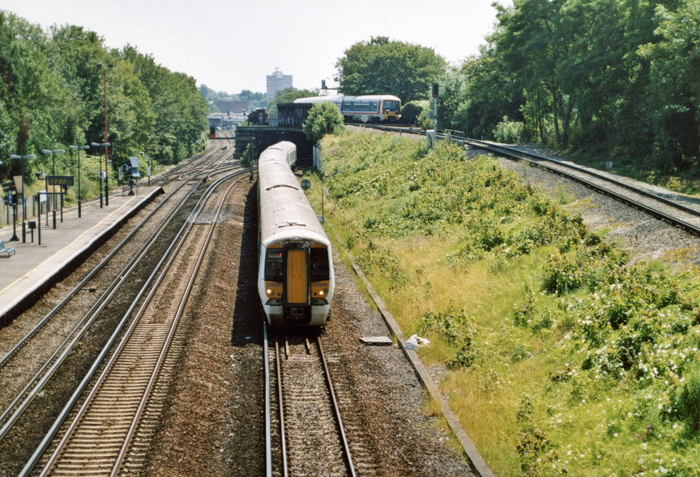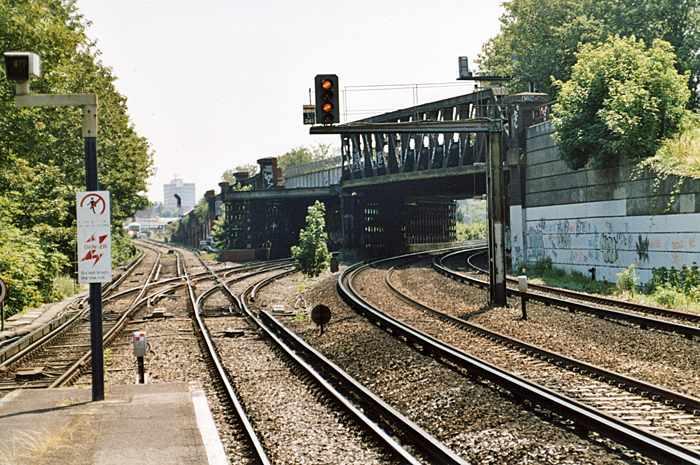
In July 2011, Balfour Beatty was awarded a contract worth £4,700,000 to undertake infrastructure upgrade works at St Johns. This formed one of the earlier parts of the Thameslink Programme, being necessary after the abolition of Spa Road Junction on the London Bridge approaches. The centrepiece of the contract was the provision of a second track, running parallel with the existing reversible line, upon the embankment descending from Lewisham Vale Junction to Tanners Hill Junction. The former was where the existing single track joined the line from Nunhead, whilst the latter was the point of convergence with the main line, just northwest of St Johns station. The scheme became known as the "Tanners Hill Flydown Project".
Whilst the project involved widening the existing embankment to accommodate a second track, considerable structural alterations to the road bridge, running across the lines at the northwestern end of St Johns station, were also required. That part of the bridge which spanned the embankment could only accommodate a single line underneath, given the positioning of the supporting pier. During a Christmas blockage between 22nd December 2012 and 2nd January 2013 (inclusive to 08:00), engineering work focused on demolishing the short brick-built southern end of the bridge to clear the way for the second track. Additionally, the remaining steel span over the other four running lines, about 90-feet in length, was retained and at its southern end, supported upon a new steel pier. This pier, which was reinforced with concrete shortly after installation, sat closer to the adjacent "up" fast line, allowing the "Flydown" to be widened for double-track working. A new steel span was lifted into place over the embankment, succeeding the demolished brick portion of the bridge.
Works were originally scheduled to continue until 14th June 2013, during a series of night and weekend engineering possessions. New connections were made at Lewisham Vale Junction: until this time, a trailing connection had been in existence between the "Flydown" track and the "down" line of the Nunhead spur. This was revised so that the newly-doubled "Flydown" had connections to both "up" and "down" tracks of the Nunhead line at the junction. At Tanners Hill Junction, the descending tracks were both afforded trailing connections to the "up" fast line, staggered apart by about 150-yards. A new facing crossover was also installed between "up" and "down" fast lines. Double-track working on this section of line formally commenced on 2nd April 2013, after works were completed over the Easter period.

The 2010 layout was essentially that which emerged after major rebuilding works from 1973 to 1976. Prior two island platforms in use, but the southern of these was subsequently replaced by an embankment carrying a single reversible line. Drawn by David Glasspool

Another westward view from 3rd July 2006 shows a ten-car formation descending the 1976 embankment, No. 465029 trailing on the rear. Beyond the footbridge, the train is seen passing through the southern third of the original viaduct, which was modified to accommodate the then new single-track. To the right of this is the flat-bottomed road bridge span: this replaced viaduct arches in 1992, when the island was extended westwards to accommodate twelve-car ''Networkers''.© David Glasspool

This eastward view from 3rd July 2006 shows Electrostar No. 375606 heading towards Charing Cross, whilst a Class 465 is observed coming off St Johns Flyover and embarking on the line to Nunhead, forming a service to Victoria. The double-track in the background, on the left, forms the slow lines to Lewisham. © David Glasspool

This eastward view from 3rd July 2006 reveals the extent of the damage sustained by the flyover during 1957. The lattice pattern, seen spanning the double-track on the right, formerly crossed all four tracks. The structure collapsed over the ''down'' fast tracks, which is the reasoning behind the seemingly makeshift repair over these lines. The double-track on the left ascends to Lewisham. © David Glasspool
Return to the Kent Rail Homepage or alternatively, check for Updates.
Website & Copyright information - Links - Contact the Webmaster